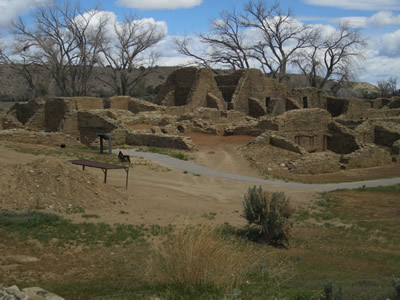
Red Rocks - Southwest trip, 2012
AZTEC RUINS National Monument, New Mexico
 Aztec Ruins National Monument
Aztec Ruins National Monument
| We left Chinle and started on our way to Chaco Canyon. As we came closer to the New Mexico line, the landscape changed. Instead of red rocks, prevalent in Arizona we now drove through a stony desert of tawny rocks. But just like in Arizon, the scenery here is also fascinating due to the bizarre rock formations created by thousands (millions?) of years of unrelenting erosion as well as earthquake activities. The entire area at one time was ocean - hard to imagine when one sees the dry stark mountains. Although we crossed state lines, we were still on the "Big Rez", the Navajo Nation. On our way to Bloomfield - the closest town to Chaco Canyon we made a small detour to the town of Aztec, home of Aztec Ruins National Monument | 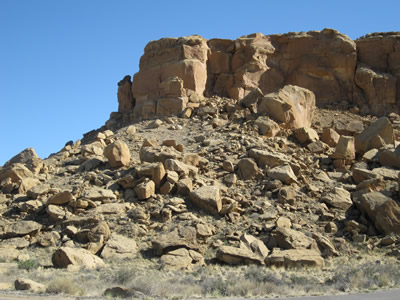 |
||||||
The site of the Great House ruins. Trees were just starting to bud when we visited. The site is only partially excavated due to scientific and financial considerations.
|
That's me in front of one of the odd doorways. It is not known why doorways were frequently bult in this "T" form. Your guess is as good as mine. |
||||||
 |
|||||||
| The name Aztec is due to the confusion of 19th century Americans who believed that the people who became known as Aztec in Meso-America had migrated out of the Soutwest US. In reality, the Aztecs had nothing to do with the Southwest. It is not entirely clear who the people were who lived in this area and constructed the large pueblos, since they mysteriously vanished in the 14th century. Today it is believed that they were the ancestors of today's Hopis and are officially referred to as Ancentral Pueblo people. For about 900 years in the area extending from Mesa Verde in Colorado, to Chaco Canyon in New Mexico, as well as Canyon de Chelly in Arizona, a series of sizeable villages were built with extensive trade routes that reached across the continent and down into today's Mexico. The Aztec Ruins are a part of the ancestral pueblo sites that radiate from Chaco Canyon. The West Ruins "Great House" (pictured below) was probably in use for 300 years | |||||||
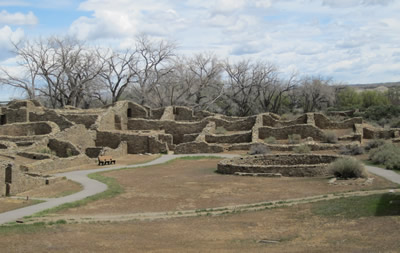 |
 |
beginning in 1100 CE. In 1987 Aztec was listed as a Unesco World Heritage site. The listing actually comprises not only Aztec ruins but also Chaco Canyon and Mesa Verde Aztec is a small but quite interesting site. Due to careful excavation, support and some restoration, it is possible to gain a rather good idea of how the four hundred room Great House must have looked like at one time - approximately around the 12th century CE. | |||||
 |
 |
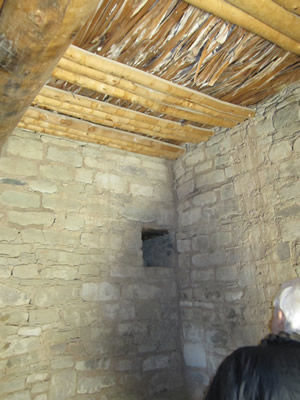 |
|||||
| Although there has been some restoration, a lot of the adobe walls and support beams -see picture on the right are original. On the upper middle picture original support beams can be seen on the ancient walls. Although the Great House once had at least four stories (like Casa Grande in Arizona), no more than two stories and they only partly survive today. | |||||||
| One of the attractions is the reconstructed great Kiva - a ceremonial chamber used for communal affairs. The stairs are for the benefit of modern visitors. Originally ladders provided access. | |||||||
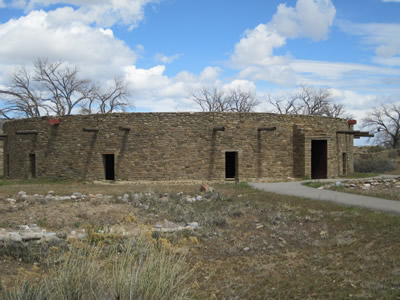 |
dd | 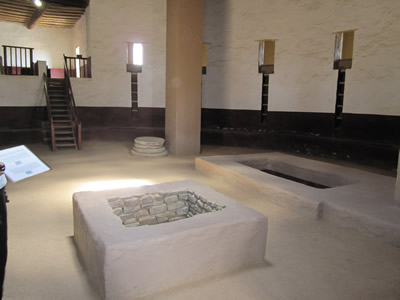 |
 |
||||
| A large number of items, clothing, food and other artifacts were found at Aztec. However, most of them are in the Natural History Museum in New York or the Western Archeological Conservation Center in Tucson. A few items can be seen here at the Park museum. | |||||||
